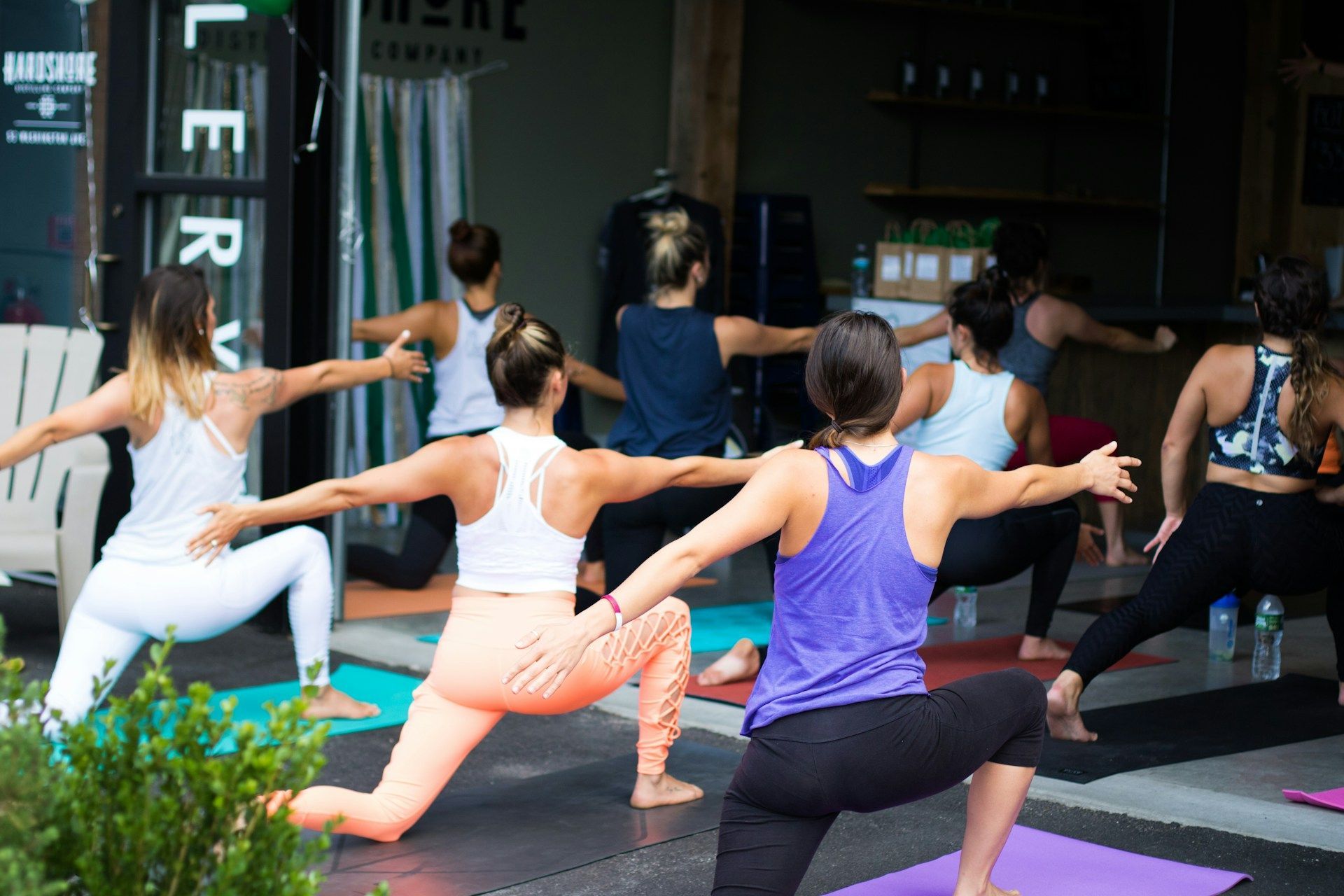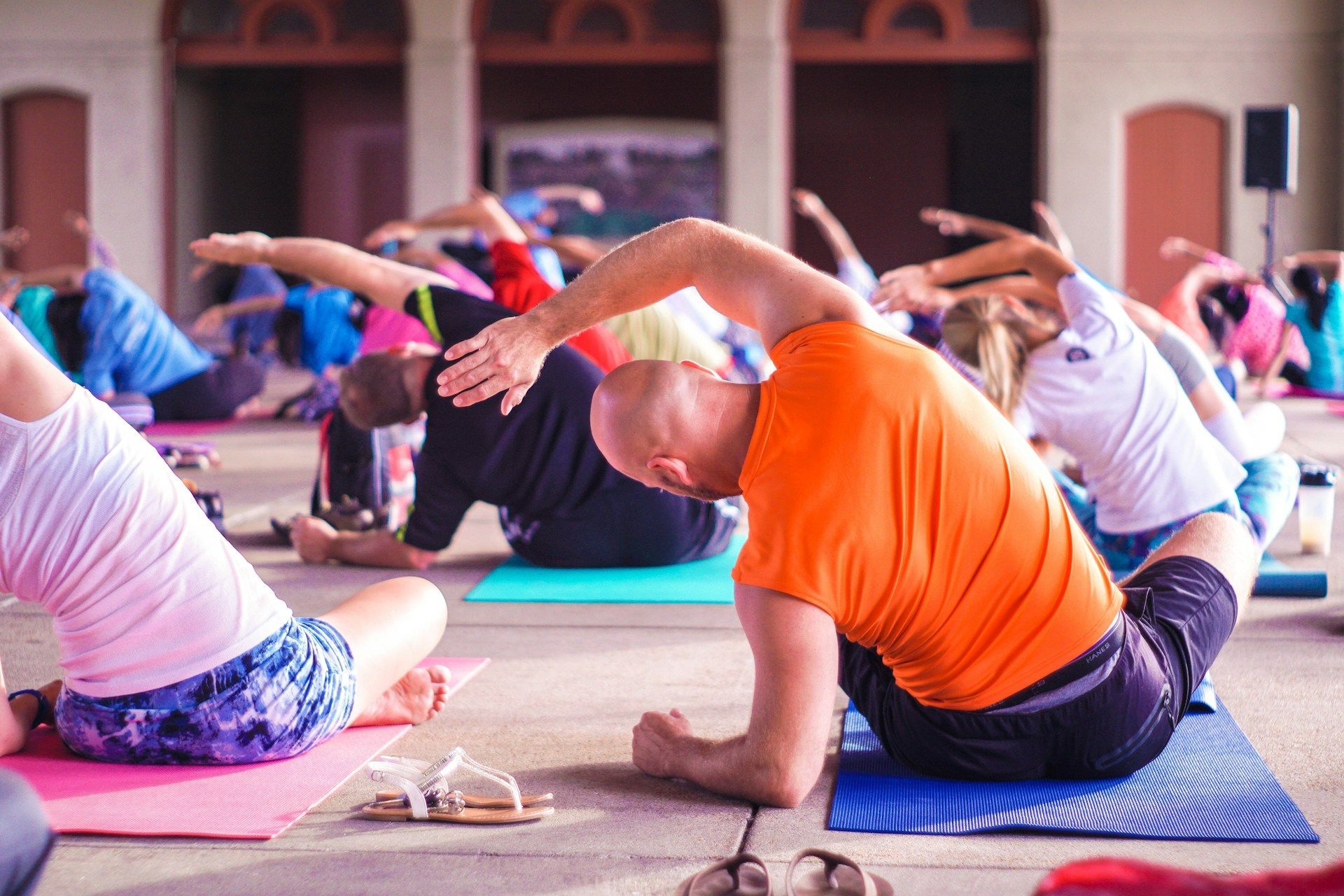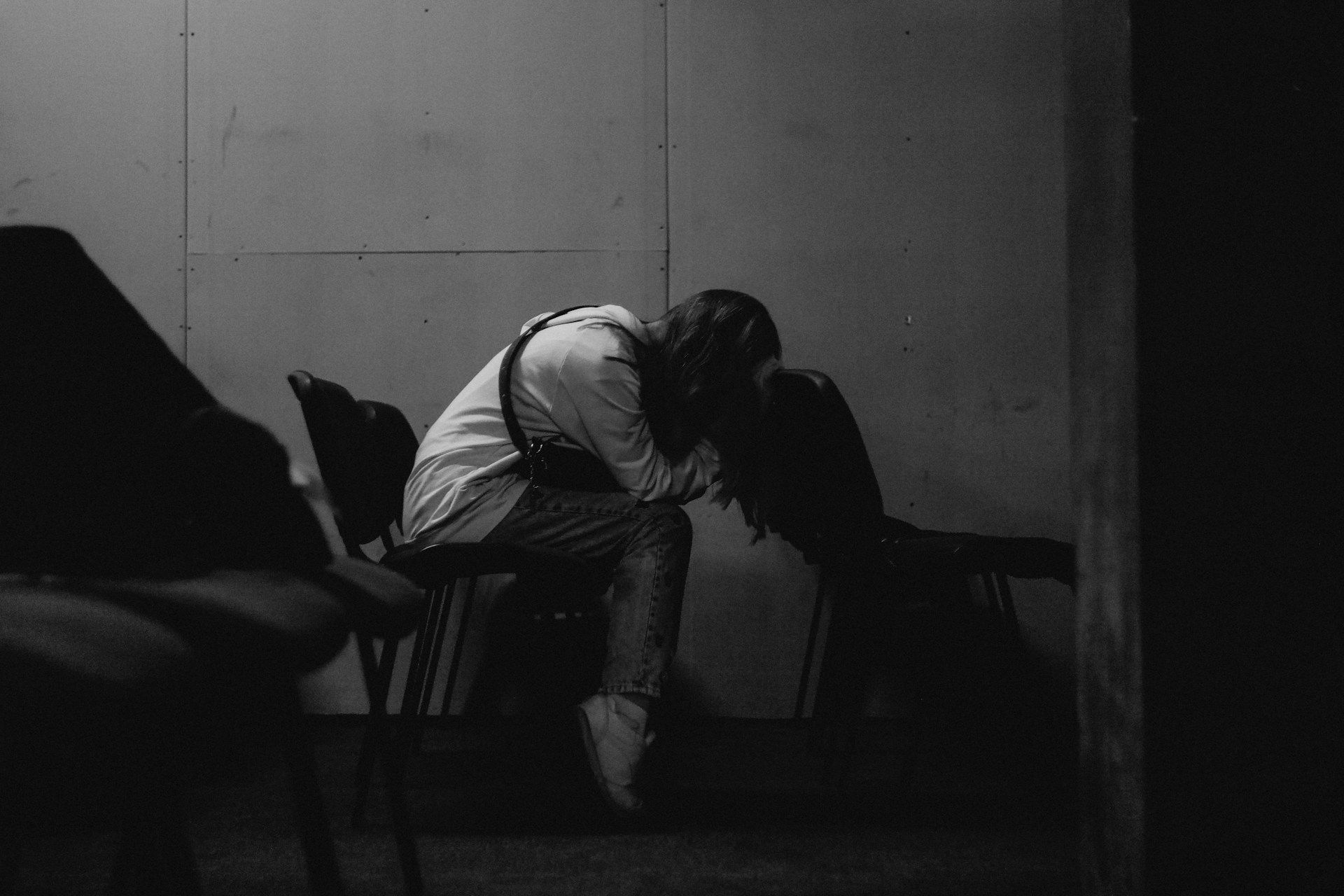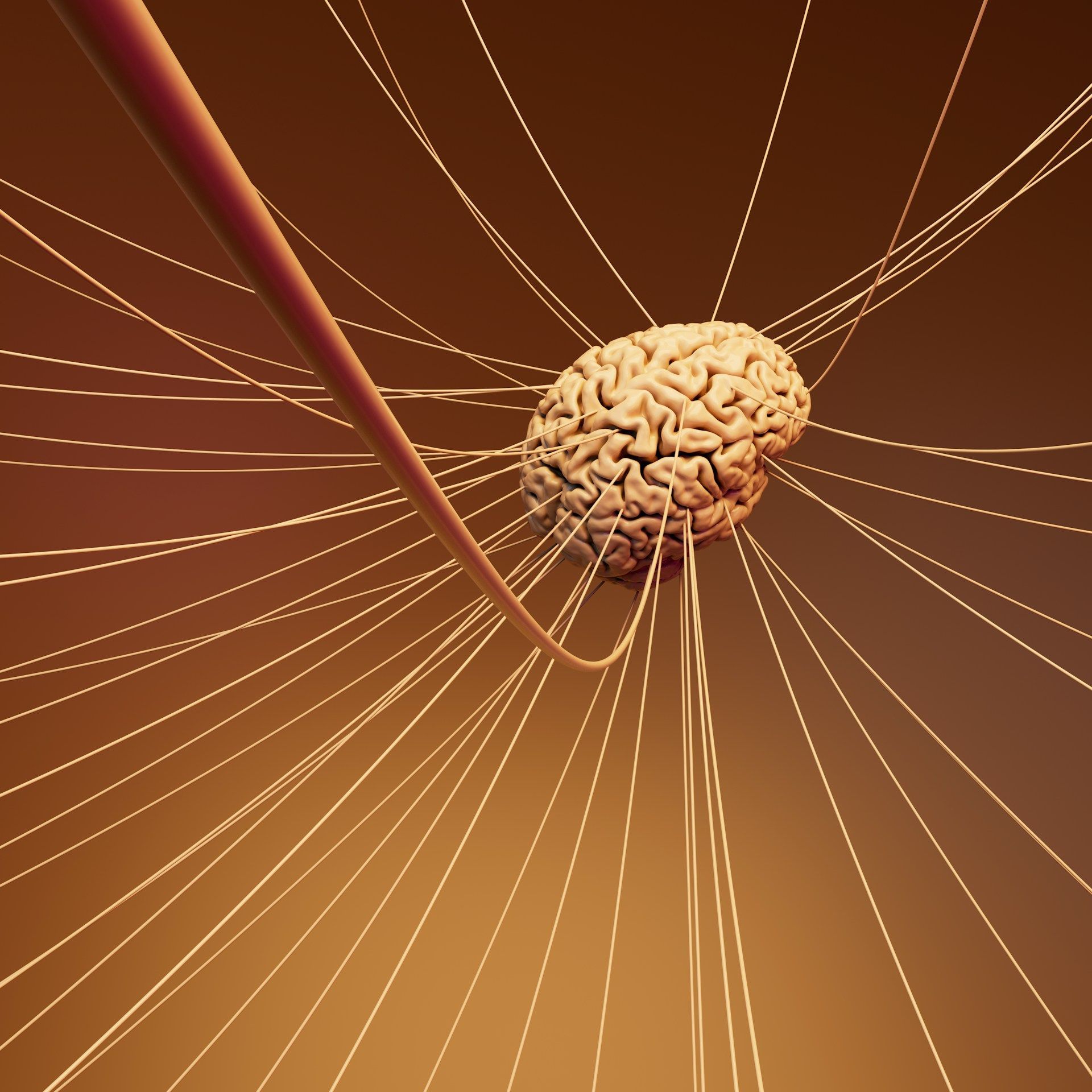Talking to the Mat for Solace When Sad
Yoga is healing therapy for more than your body...it also soothes the wounded soul.
For many people, June marks summer’s official beginning. It’s a time of celebration, for hosting backyard barbecues and giving thanks that winter’s cold has departed at last.
Unfortunately, for me, June has become the cruelest month. It’s a month of loss, of mourning, of beating back icy winds and freezing rain, only to have them move from the outside world into my heart. First, June marked the loss of my beloved Poe, who was so much more than a cat to me. The following June came the loss of a man I once loved to the addiction that plagued us both and shattered our relationship.
This year, my father is in hospice. My beloved and I are preparing to travel across the country to say our goodbyes for his 76th birthday. Internally, I’m not dealing with the realities of the trip or losing my dad at all well. However, I’m staying sober through it all, and for that, I must express my gratitude. Talking to the mat for solace helps me when I am sad, as does helping others, and it’s in that spirit that I take to my keyboard now, passing on what I have learned in hopes of teaching others coping mechanisms that may help when they need them.
A Difficult, Complicated Goodbye
I resist writing from a first-person point of view these days, but there’s no other real, honest way to discuss something so personal. To say my dad and I have had a contentious relationship is an understatement. I want to be so careful here because I only want healing, coming together, less conflict, not more. However, I also can’t deny the very real and lasting impacts our relationship has had, and many of them are not positive.
In the interest of maintaining privacy, I’ll spare many of the details for a book I have in progress,
Gifted Undiagnosed, should it see the light of publishing day. Suffice it to say here that my dad’s approval was something my young self wanted more than anything in the world but could never seem to earn. At the same time, I rebelled against his ideologies, his deeply held belief systems that haunt me to this day.
To my dad’s mind, the world was a hostile, unforgiving place, and so was everything in it. As it was written in the Gospel According to My Dad, everyone was out to cheat everybody else. It was survival of the fittest, eat or be eaten, only the strong survive, and snowflake stuff like love, warm fuzzies, and lazy afternoons deserved scorn. Life was work punctuated by the occasional material pleasure, but rewards were only for those who took them by hook or by crook; there was no sense of working together to build a mutually satisfactory future or attain discussed and agreed-upon goals. He was dad, and therefore the king — we were his subjects, born to do what we were told to do and nothing else. My inability to follow along with his preordained plan for my life led to endless battles, tears, and acting out in my teen years. All of my adult battles and struggles, I endured alone. I was the failure, I was the loser, I was the bad one, I couldn’t get with the program. I didn’t deserve any love, sympathy, or support as I lost jobs, relationships, homes, health, and sanity.
And the timing couldn’t be worse. My beloved and I were among the fortunate to buy a home amid the current housing crisis, but it took literally everything we had — and it was such a near miss. Traveling is expensive, and we’re piecing together the trip across several nearly maxed credit cards, which gives me the screaming horrors, considering the nightmares I’ve had with credit and housing in the past. I also have a 15-year-old diabetic cat, whom I do
not
want to leave. She’s never been away from me that long, other than staying with Ed, my partner in Only in Sedona Yoga, when I dealing with my previous housing crisis. If you’ve watched the show, you’ve seen Squeeks. The thought of leaving my precious best friend, who
was by my side through it all, even for a little while, makes me feel physically ill.
However, I have to go, and I must focus on the gratitude I have that I can do so in a borrowed campervan, with the man I love, instead of trying to drive myself in a Jeep that may not make it that far or taking my chances hitchhiking. As I’ve mentioned on the show and no doubt will again, the only energy each of us truly controls is our own. I know how devastating it is to feel abandoned by the people you love most when you need them the most. Despite the contention between my dad and I have had over the years, I don’t want him to feel that way. And so I go, praying that Squeeks will be okay with a friend who will stay overnight with her in our absence, and Ed, who has promised to check in on her. I go, not out of duty, as may have been the case in the past, but out of genuine love.
The Only Love You Control Is Your Own, and All We Have to Decide Is What to Do With the Time Given to Us
Love is a funny thing. Cognitively, I’m not sure I’m making the right choice, and it doesn’t help that my therapist has misgivings, too (although, bless that woman, she went out of her way to get me an emergency appointment before I left). After all, I love Squeeks, and I will never be able to forgive myself if something happened to her in my absence. How can I choose one over the other?
However, talking to the mat tells me that viewing it as a choice is flawed reasoning. Squeeks is older and has to follow a special diet (much like me), but she isn’t in immediate danger of departing this plane. Despite her age, she still runs around like a kitten sometimes. My dad is nearing the end, and this might be the last chance I have to tell him that, despite it all, I do love him. The trip is a hardship, but it isn’t
impossible, which makes me feel like I must try.
It’s not that my love for either one is greater. Love is love, it is not quantifiable. This trip is a matter of answering the greatest need at this moment in time. I hope everything will go well, that I can give my dad closure and return to my beloved farm to find everything intact, Squeeks well, healthy, and happy to see us, nascent plants growing more than I could have imagined in my absence. But that’s all I can do is hope at this point and try to mindfully make the right decision.
But it’s hard. I’m being perfectly honest when I say the urge to escape, to dissociate, to seek that pleasant surcease of sorrow that accompanies intoxication, has rarely been stronger. And while cannabis remains illegal in many of the states we’ll pass through on our trip, alcohol is everywhere in America. That means temptation similarly lurks at every truck stop.
Making a Crisis Management Plan on the Mat
Even though I am blessed to have professional therapy, I still do much of my hard work on the mat. It’s very much my sanctuary, and it has seen a lot of hard use since that first sorrowful June when I lost my beloved Poe. Sometimes, I turn here for silence; other times, to take a hard look at myself and the role I play in my life’s events. Recently, I turned to it to make a crisis plan, which I’ll share with you — in case, dear reader, you should ever have to muddle your way through a similar tempting situation. It helps to have patterns, steps, to follow.
The first steps were the hardest because they involved reaching out for help. Asking for assistance, especially for my needs to be met, is a behavior pattern I never learned, and handling interpersonal interactions isn’t something my autistic brain does instinctively. I’m the sort who would rather dig a 10-foot trench through rocky soil with a teaspoon rather than say, “Hey buddy, could you lend me a hand or even a proper shovel?” My social anxiety is off the charts, reinforced by countless negative responses to my previous awkward attempts to get the help I need. However, part of my healing journey has entailed building a support system, so I forced myself to make two calls.
One was to my primary care physician for a short-term dose of Xanax. I’m not a fan of benzodiazepines, having had them prescribed in the past, but they are better than alcohol. While I’d prefer to go the natural “Cali sober” route, many of the states we have to pass through, such as Texas, still object to the “devil’s lettuce” for some unknown, unscientific reason, and while I don’t understand their laws, I have to respect them. I’m not yet far enough along in my healing journey to raw dog it without an emergency backup, I know it, and fortunately, bless him, my doctor agreed.
The second was to my therapist, whom I wasn’t supposed to see again until after I returned. She was gracious enough to squeeze in an emergency appointment and wise enough to ask me if we could bring my beloved on the call so that she could review my triggers and how to support me. Dear reader, if you live in Arizona, I can’t recommend
Psychological Pathways highly enough. They also specialize in autism, ADHD, and Alzheimer’s.
I know a belief in “signs” defines logical reason and shouldn’t be relied upon when making decisions, but when I was a kid, magical thinking was all I had. I still feel comforted when the Universe sends me one (at least, what I interpret to be a sign, secretly, inside, where it can’t affect anyone else). I got one when my therapist introduced me to an intervention technique to use when my emotions became overpowering.
She called it “TIPS,” and, according to how she explained it, it goes like this:
- First, stick your face in cold water or put something cold on your face while holding your breath for 30 seconds. This initiates the dive reflex, which tells your nervous system to slow everything down.
- Then, do a high-intensity burst of exercise until you feel fatigued. She laughed at this point, explaining why it’s rare for her to encounter a patient who will actively use this intervention. I laughed, too, especially after hearing the final two steps.
- Next, you do deep, rhythmic breathing. She didn’t say to include a stretch, but in my mind, deep breathing and stretching go together like peas and carrots.
- Finally, you end with progressive muscle relaxation.
I laughed and then cried as she explained this to me. When she finished, I had to confess, “Other than the cold water trick, you’ve literally just described what I’ve been doing with the Only in Sedona Yoga’s
Mindful Kids program. It starts with a burst of high energy exercise, followed by deep breathing and simple stretching, before ending with a relaxation technique such as progressive muscle relaxation, the 5, 4, 3, 2, 1 grounding exercise, etc.” Although I’ve had to put that particular project on the backburner for now, it was a huge shot of validation that it’s not such a crazy idea to teach kids how to manage “big feelings” the healthy way by using their bodies.
Again, I know it’s not logical, but that moment felt like the Universe whispering, “You’re on the right course. All things in the right time. Keep sober. Keep going. You
can do this, you
can
get through this and remain fully present.”
Working through the travel plans, including those for Squeeks, made me feel a bit better. The rest is a matter of noticing my triggers and taking myself out of the game, applying those interventions, to avoid impulsively acting on them. This trip will still be a challenge, but talking to my mat when those emotions come up has become enough of a habit that I’m fairly confident in my ability to be a decent travel partner, despite the sad reason for the journey.
This situation does illustrate why engaging in
daily mindfulness practices is so crucial. Taking that time to come back to yourself, to center, isn’t easy, and it’s not instinctive for many, especially those who have had traumatic upbringings. Distractions like doom-scrolling while sucking down bottle after bottle of suds sounds so much nicer, easier, more relaxing than sitting with difficult feelings.
However, sitting with those troubling emotions is exactly what you have to do to process them and render them a temporary hiccup on your life’s journey. Otherwise, it’s far too easy for one negative event to spark an entire pattern, with poor coping choices spurring future adverse events, on and on in an ever-accelerating spiral of despair.
Being Gentle to Yourself and Talking to Your Mat for Solace
Even as I write this, I can hear the voices of what Dr. Daniel Fox refers to as “the family in your head” on his wonderful YouTube channel mocking me. “Do you really think anyone would want advice from a loser like you?” However, my intent isn’t to tell anyone how to live their life. It’s simply to offer what’s worked for me, as other people might find it useful. Just like Only in Sedona Yoga’s Mindful Kids is designed to be the intervention I needed in youth, but didn’t have, everything I do on our channel is just to guide. It’s my way of giving back and showing gratitude to all the guides, past and present, who have helped me on my own journey.
A large part of my healing work on the mat is reparenting myself. With that spirit in mind, here’s a step-by-step guide to what I do when the temptation to drink strikes due to overwhelming negative emotions that make it hard for me to cope.
1. Sweat Out Those Stress Hormones
Stress hormones start pumping when you’re faced with a difficult emotional situation that you don’t know how to handle. While some people thrive on this adrenaline rush, in others, especially those with a history of trauma, it can make clear thinking nearly impossible. You feel like a ticking time bomb in the final milliseconds of a countdown. Before you “blow,” do something that leaves you panting, breathless with exertion. I’m taking along running shoes, a jump rope, and my DailyBurn app. If I can’t run, depending on where we are, I can Rocky it out with the jump rope next to the campervan until I’m gasping for air.
Experiment with this step because everyone’s body is unique. You don’t want to keep going too hard for too long, as extreme exertion can
increase stress hormones instead of dissipating them. Scientists are still puzzling out exactly the right balance, but it’s probably slightly different for everyone.
Be mindful and tune into your body. If you find going hard helps, try doing so only to the point of breathlessness — not more than 10 to 15 minutes — and see how that feels. It may be that a brisk walk serves you better than a heart-pounding sprint. If that’s the case, roll with that.
2. Return to the Breath and Mindfulness of Your Body
It’s much easier for me to talk to my mat once I’ve made like a Taylor Swift tune and shaken off those excess stress hormones. Only then, I’ve found, can I reap the full benefits of deep breathing and mindful stretching.
Again, play with it, and above all, choose a style and speed of yoga that feels as cozy as a cup of hot cocoa on a snowbound day. It may vary, depending on how you feel at any given time. The most crucial factor is tuning into the breath, synchronizing it with flowing vinyasa movements or using it to sink deeper into a passive restorative or Yin posture.
3. Seek Stillness
Talking to your mat for solace concludes with seeking stillness. It’s practicing detachment, remembering that you are not your thoughts or your feelings, any more than you are your arm or your leg. You are a miraculous union of trillions of cells, of matter and energy, of stuff even the world’s most brilliant scientists cannot fully explain or most priceless instruments detect.
This step entails finding your calm center of awareness, after using your physical self to facilitate the process. Once there, returning your attention again and again to your breath, noticing when you get off course and simply noting what’s going on when you do, without any judgment, brings clarity. It’s like throwing a rock in a pond, then allowing the water to go still, the mud to sink, letting you see clearly to the bottom once more.
Talking to the Mat for Solace When Sad
Talking to your yoga mat when you’re sad will probably never become a standard Hollywood trope, like a troubled character walking into a bar and staring miserably into a bottle of Bud. However, it’s the healthiest method I’ve found for processing difficult emotions, including sorrow and grief.
Is it the easiest route? Absolutely not. However, you do have the power to manage overwhelming emotions. This particular method works for me, and so I share it here and do what I do in hopes that others may find similar solace amid difficult times.











